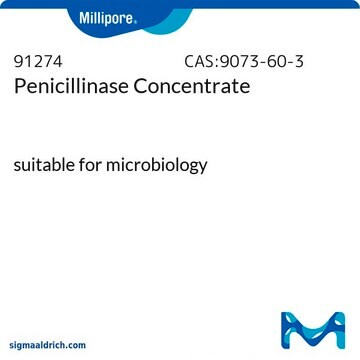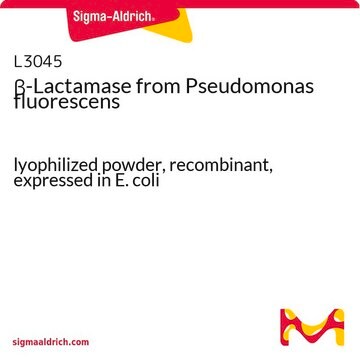426205
β-Lactamase, Bacillus cereus 569/H9
Sinônimo(s):
β-Lactamase, Bacillus cereus 569/H9, Penicillinase
About This Item
Produtos recomendados
fonte biológica
Bacillus sp. (Bacillus cereus)
Nível de qualidade
forma
lyophilized
embalagem
vial of ≥50 units β-lactamase II
vial of ≥500 units β-lactamase I
fabricante/nome comercial
Calbiochem®
condição de armazenamento
OK to freeze
solubilidade
sterile distilled water: soluble
Condições de expedição
ambient
temperatura de armazenamento
−20°C
Descrição geral
Ações bioquímicas/fisiológicas
Advertência
Definição da unidade
Reconstituição
Informações legais
Palavra indicadora
Danger
Frases de perigo
Declarações de precaução
Classificações de perigo
Resp. Sens. 1 - Skin Sens. 1
Código de classe de armazenamento
11 - Combustible Solids
Classe de risco de água (WGK)
WGK 3
Ponto de fulgor (°F)
Not applicable
Ponto de fulgor (°C)
Not applicable
Certificados de análise (COA)
Busque Certificados de análise (COA) digitando o Número do Lote do produto. Os números de lote e remessa podem ser encontrados no rótulo de um produto após a palavra “Lot” ou “Batch”.
Já possui este produto?
Encontre a documentação dos produtos que você adquiriu recentemente na biblioteca de documentos.
Os clientes também visualizaram
Nossa equipe de cientistas tem experiência em todas as áreas de pesquisa, incluindo Life Sciences, ciência de materiais, síntese química, cromatografia, química analítica e muitas outras.
Entre em contato com a assistência técnica










